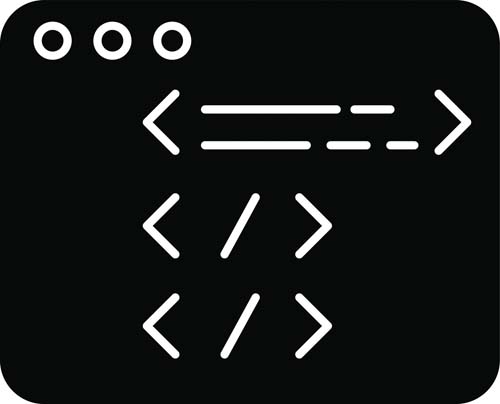推荐答案
在JavaScript中,可以使用多种方法对映射进行排序。下面将介绍几种常用的排序方法:
1.使用数组的sort()方法:
首先,将映射对象转换为键值对数组,然后使用sort()方法对数组进行排序。排序时可以传入一个比较函数,该函数定义了排序的规则。比较函数接收两个参数,表示要比较的两个元素。根据需要,可以选择按键或值进行排序。以下是一个示例代码:
const map = new Map();
map.set('apple', 3);
map.set('banana', 1);
map.set('orange', 2);
const sortedArray = Array.from(map).sort((a, b) => {
// 按照值进行升序排序
return a[1] - b[1];
});
const sortedMap = new Map(sortedArray);
console.log(sortedMap);
这段代码将按照映射的值进行升序排序,输出结果如下:
Map(3) { 'banana' => 1, 'orange' => 2, 'apple' => 3 }
2.使用第三方库:如果需要更复杂的排序逻辑,可以使用第三方库,如Lodash或Underscore.js。这些库提供了更高级的排序函数,用于处理各种排序需求。下面是使用Lodash库的示例代码:
const _ = require('lodash');
const map = new Map();
map.set('apple', 3);
map.set('banana', 1);
map.set('orange', 2);
const sortedMap = new Map(_.sortBy(Array.from(map), [1]));
console.log(sortedMap);
这段代码使用了Lodash的sortBy()函数,根据值进行排序。输出结果与前面的方法相同。
3.将映射转换为数组后再排序:这种方法与第一种方法类似,不同之处在于它使用了ES6的扩展运算符来转换映射为数组。示例代码如下:
const map = new Map();
map.set('apple', 3);
map.set('banana', 1);
map.set('orange', 2);
const sortedArray = [...map].sort((a, b) => a[1] - b[1]);
const sortedMap = new Map(sortedArray);
console.log(sortedMap);
此代码片段将映射转换为数组,然后应用相同的排序规则。输出结果与前两种方法相同。
这些是在JavaScript中对映射进行排序的几种常见方法。根据具体的需求,选择最适合的方法来实现映射的排序。
其他答案
-
在JavaScript中,要对映射进行排序,可以使用以下方法之一:
1.使用Array.from()方法和sort()方法:
可以将映射对象转换为一个键值对数组,然后使用sort()方法对数组进行排序。排序时可以传入一个自定义的比较函数来定义排序规则。以下是示例代码:
const map = new Map();
map.set('apple', 3);
map.set('banana', 1);
map.set('orange', 2);
const sortedArray = Array.from(map).sort(([keyA, valueA], [keyB, valueB]) => {
// 按照值进行升序排序
return valueA - valueB;
});
const sortedMap = new Map(sortedArray);
console.log(sortedMap);
这段代码将按照映射的值进行升序排序,并输出结果。
2.使用第三方库:
可以使用一些流行的第三方库,如Lodash或Underscore.js来简化排序过程。这些库提供了强大的排序函数,可以满足复杂的排序需求。以下是使用Lodash库的示例代码:
const _ = require('lodash');
const map = new Map();
map.set('apple', 3);
map.set('banana', 1);
map.set('orange', 2);
const sortedMap = new Map(_.sortBy(Array.from(map), ([key, value]) => value));
console.log(sortedMap);
这段代码使用了Lodash的sortBy()函数,根据值进行排序,并输出结果。
3.使用扩展运算符:
可以使用ES6的扩展运算符将映射转换为一个键值对数组,然后再进行排序。以下是示例代码:
const map = new Map();
map.set('apple', 3);
map.set('banana', 1);
map.set('orange', 2);
const sortedArray = [...map].sort(([keyA, valueA], [keyB, valueB]) => valueA - valueB);
const sortedMap = new Map(sortedArray);
console.log(sortedMap);
这段代码将映射转换为数组,然后应用相同的排序规则,并输出结果。
这些方法都可以实现对JavaScript中的映射进行排序。根据自己的需求选择最适合的方法即可。
-
在JavaScript中,对映射进行排序有多种方法可以实现。以下是三种常见的排序方法:
7.使用Array.from()方法和sort()方法:
首先,可以使用Array.from()方法将映射对象转换为一个键值对数组,然后使用sort()方法对数组进行排序。代码示例如下:
const map = new Map();
map.set('apple', 3);
map.set('banana', 1);
map.set('orange', 2);
const sortedArray = Array.from(map).sort((a, b) => a[1] - b[1]);
const sortedMap = new Map(sortedArray);
console.log(sortedMap);
此代码将按照映射的值进行升序排序,并将排序后的数组转换回映射对象。输出结果将按照排序后的顺序显示键值对。
8.使用第三方排序库:
除了基本的JavaScript方法外,还可以使用第三方排序库,如Lodash或Underscore.js,来简化排序过程。下面是使用Lodash库的示例代码:
const _ = require('lodash');
const map = new Map();
map.set('apple', 3);
map.set('banana', 1);
map.set('orange', 2);
const sortedMap = new Map(_.sortBy(Array.from(map), [1]));
console.log(sortedMap);
此代码使用Lodash的sortBy()函数,将映射对象转换为数组并按值进行排序。
9.使用扩展运算符:
可以使用ES6的扩展运算符将映射对象转换为一个数组,然后再进行排序。示例代码如下:
const map = new Map();
map.set('apple', 3);
map.set('banana', 1);
map.set('orange', 2);
const sortedArray = [...map].sort((a, b) => a[1] - b[1]);
const sortedMap = new Map(sortedArray);
console.log(sortedMap);
此代码将映射对象转换为数组,应用相同的排序规则,并将排序后的数组转换回映射对象。
这些方法都可以用于在JavaScript中对映射进行排序。可根据具体需求选择适合的方法来实现映射排序操作。

























 京公网安备 11010802030320号
京公网安备 11010802030320号